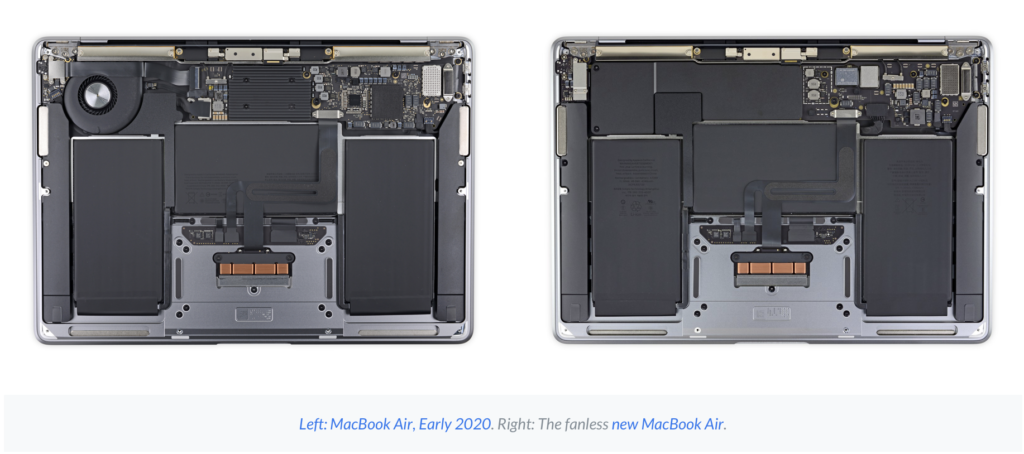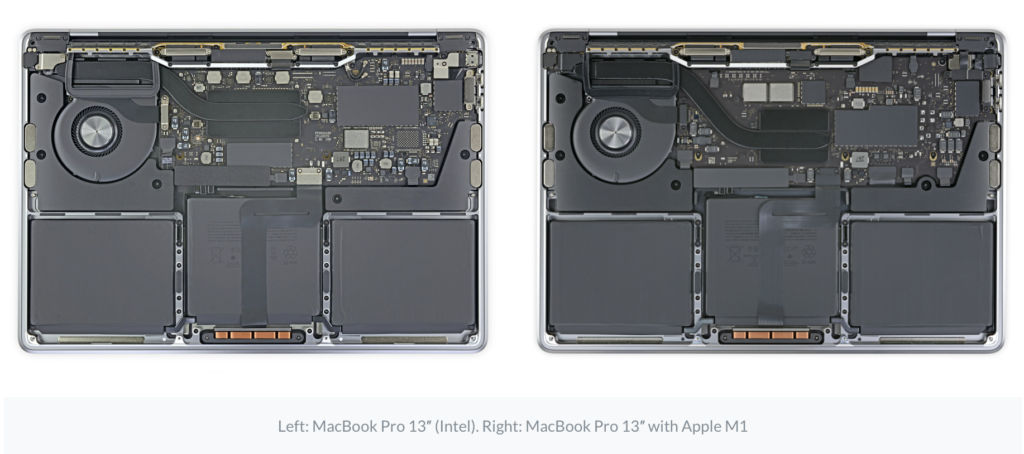The first M1 MacBooks were delivered to customers earlier this week. Now the repair experts at iFixit have opened the devices and provided an analysis.
The biggest change in the MacBook Air is of course the lack of a fan. Instead, the new Apple Silicon notebook has an aluminum heat spreader that hangs on the left edge of the logic board. iFixit has given further details in its analysis and explains how the new MacBook Air M1 cools itself:
There's just not much that can go wrong here. A thick cold plate over the M1 processor draws heat via conduction to its flatter, cooler end where it can be safely dissipated. Without a fan, this solution may take longer to cool and leak sooner, but by not using heat pipes or a vapor chamber, the sink also has more mass to become saturated with thermal energy. There are no moving parts and nothing to break. You'll need new thermal paste occasionally, and that's about it.

MacBook Pro 13″: “Fan doesn’t have much to do”
Apart from the removal of the fan, the new MacBook Air is "identical to its predecessor," according to iFixit. The battery is slightly different, however. The entire repair process, however, will "likely remain almost entirely unchanged," according to iFixit. The new MacBook Pro is also incredibly similar to its Intel predecessor, the repair experts report. While there was speculation that the fan might be different and quieter this year, this is not the case:
Turns out, not so much: The single fan on our M1 MacBook Pro is identical to the fan on the dual-port Intel MacBook Pro 2020 we took delivery of earlier this year. Not similar-identical.
In other words, what you're not hearing there is the sound of an aggressive fan curve. This thing probably never spins more than a fraction of its upper limit. Remember, the same M1 chip performs well in the fanless MacBook Air, too, so that fan probably doesn't have too much to do under prolonged load either.

Apple M1 chip
Of course, iFixit did not miss the opportunity to analyze the M1 chip in more detail and also commented on Apple's new integrated memory chips, which are reminiscent of the iPad. The report states:
If it looks familiar, it might be because you saw one of our recent iPad teardowns. It's no surprise that Apple copied some of its own homework here. By burning RAM into the M1 package, every part of the M1 (CPU, GPU, Neural Engine, etc.) can access the same pool of memory without having to copy or cache the data in more than one place.
If you want to see the complete teardown, you can find it here here. AirPods Pro on special offer at Amazon – available now. (Image: Apple)





